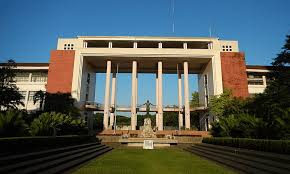While Malacanang has been bragging about strides made in agrarian reform under the administration of President Ferdinand Marcos Jr., particularly its New Agrarian Emancipation Act (NAEA), which condones debts by beneficiaries, the only administration that the regime has bested was the 14-year martial law government of father and namesake, Ferdinand Marcos Sr.
In a paper dated Nov. 15, 2024, prepared by Task Force Mapalad (TFM), a farmer federation seeking the completion of the land acquisition and distribution (LAD) component of agrarian reform, the federation noted that the debilitating inertia that has crippled the Department of Agrarian Reform (DAR) in pushing LAD proves that Secretary Conrado Estrella Jr. is not equal to the task. The about-face that he committed in Batangas led to the marginalization of beneficiaries, who were left speechless when haciendas were parceled out and divided equally between the landlords and the landless, with the wealthy getting the more arable land for their solar power projects and eco-tourism ventures.
LAD has hit the quicksand due to the decline in the allocation of its budget annually, TFM groused. The federation wants Marcos Jr. to end the yearly torture of the allocations for LAD, which is at the mercy of the landowners and agribusinesses that control Congress. Fact is, 70% of lawmakers in the Lower House belong to political dynasties that lobby annually to underfinance LAD. Their influence on DAR is so strong that the department normally issues administrative orders that block LAD implementation and buy time for landowners and agribusinesses to delay the distribution of lands. Landlords circumvent LAD and recover control over distributed lands.
With Marcos Jr.’s sorry accomplishment rate, TFM mourns that it will take another 47 years for LAD to be completed, not an exciting prospect after he had vowed to end landlessness, the way his father had declared that the scourge of landlessness will; end under his New Society. The more that society changed, the more it looked the same, rued Marcos critics, and they were never wrong. Instead of acting forcefully to dismantle large landholdings, cronies accumulated lands, from the Yulos and Sabidos who cornered the Yulo King Ranch and the Bugsuk enclave of Danding Cojuangco that Ramon Ang had inherited and wants to transform into an airport and ecotourism haven.
Poring through the documents from Presidential Decree 27 to CARP, CARPER, and host of other agrarian reform, TFM noted that the Marcos Sr government from 1972 to 1986 managed to distribute only 114,259 hectares to agrarian reform beneficiaries (ARBs) for an annual distribution rate of only 5,440.90 hectares, the worst among eight regimes. Ranked second worst is the son, who managed to distribute only 21,477 hectares from 2022 to 2023, for an average of 10,738.34 hectares per year. Rodrigo Duterte, swept to power on the promise of change, delivered only 117,599 hectares to landless farmers, for an average of 23,519,78 hectares annually.
The late President Fidel Ramos was the best performer at 1,912,664 hectares from 1192 to 1998, or 318,777.83 hectares delivered to farmers every year. Joseph Estrada, who served only from 1998 to 2001, distributed 379,905 hectares or 151,962 hectares per year. Cory Aquino distributed 745,293 hectares from 1986 to 1992 or 125,215.50 hectares every year. Gloria Macapagal Arroyo served for nine years, doled out 1,912,664 hectares for a yearly average of 124,562.78 hectares annually. The late Noynoy Aquino distributed 445,641 hectares or 74,273.50 hectares yearly.
The figures suggest that since 2010, the agrarian reform programs have slowed down tremendously, indicating that while Philippine presidents may be skilled at oratory and make promises by the hour, they end up lacking the strong political will to ensure that agrarian reform will be the capstone of their careers. In the cases of Marcos Sr. and Jr. they made the emancipation of peasants from the bondage to the soil as the cornerstone of their administrations. They were never mailmen. They didn’t deliver.
You can’t squabble with statistics, particularly when the very agency charged with erasing landlessness from the country works at cross-purposes with its bureaucratic mission, like revoking notices of coverage (NOCs) and declaring islands peopled by the indigenous groups in Palawan like Bugsuk Island to be non-agricultural, along with the 40,000 hectares of farmed areas in Coron and Busuanga to be fit only for pasture. Not to be forgotten are the hundreds of thousands of hectares of logging concessions in Sultan Kudarat operated by the Consunjis, the coffee plantations high up in Lake Sebu, South Cotabato and the coal, nickel and manganese mines ready for exploitation.
TFM urged Marcos Jr, to turn a new leaf, forget about the plutocrats that comprise the Private Sector Advisory Council (PSAC) who are not the better angels of our nature, and pursue agrarian reform with dedication and a passionate desire to finally end landlessness. The latest estimate is that a total of 507,575 hectares of agricultural lands still have to be distributed, or even less considering the more than 100,000 hectares of land under the Bangsamoro Autonomous Region in Muslim Mindanao (BARMM.) of agricultural lands remain to be awarded. Marcos Jr. should start working double time to finance LAD, overturn all decisions and orders that impede agrarian reform restore landlord control in areas already acquired by the state, and pay for eventual distribution to landless peasants. The will must be stronger than the skill.




